Khai
Doan Pagoda
Photos Home
Countries
Vietnam
Vietname 2020
Buon Me Thuot
Quy Nhon
Saigon 2020
All
photos on this page
© John Holstein 2020
© John Holstein 2020

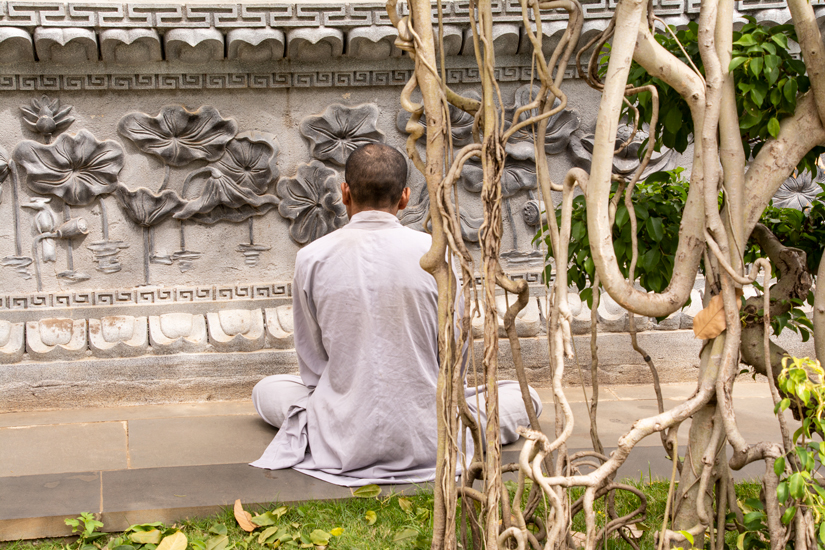
When
I arrived I noticed this monk in a lotus position facing the lotus wall.
He was in that position when I looked a few minutes later.
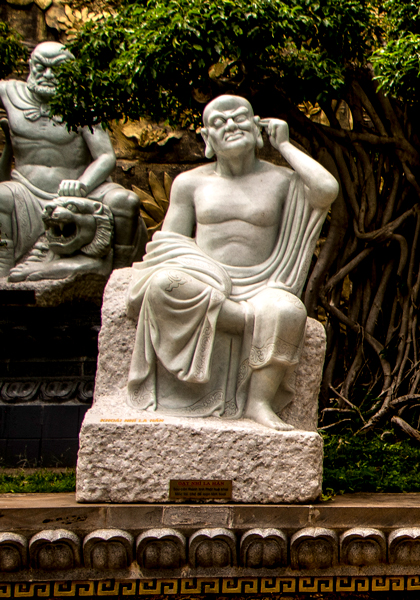
One
of the temple's 18 exquisitely carved statues of Buddha's arhats. The
best (and most interesting) explanation about arhats that I have found
is here,
at Learn Religions.

A
few more arhats.
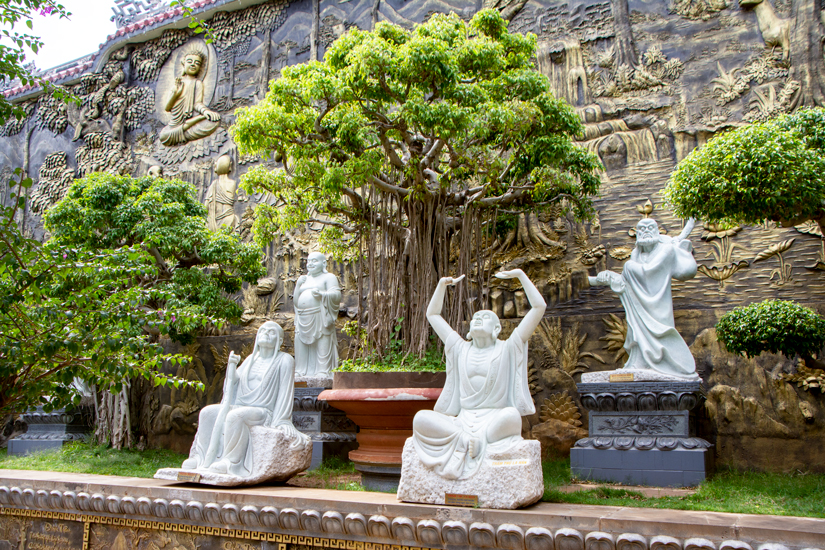
There
are a total of 18 arhats represented at Khai Doan Pagoda. That's a common
(though not the only) number for Mahayana Buddhist temples. Wikipedia:
"Buddhism in Vietnam. . . as practised by the ethnic Vietnamese is
mainly of the Mahayana tradition. Buddhism may have first come to Vietnam
as early as the 3rd or 2nd century BCE from the Indian subcontinent or
from China in the 1st or 2nd century CE. Vietnamese Buddhism has had a
syncretic relationship with certain elements of Taoism, Chinese spirituality,
and Vietnamese folk religion."
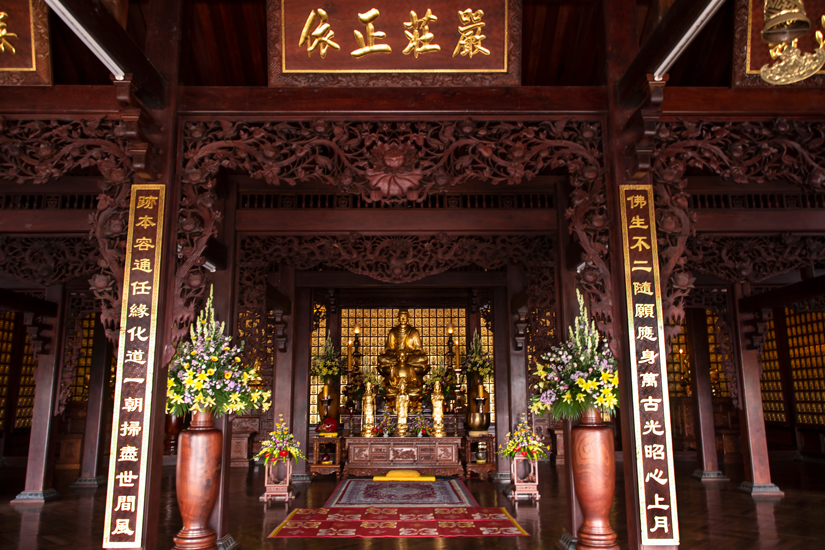
The
main prayer hall with its amazing wood carving
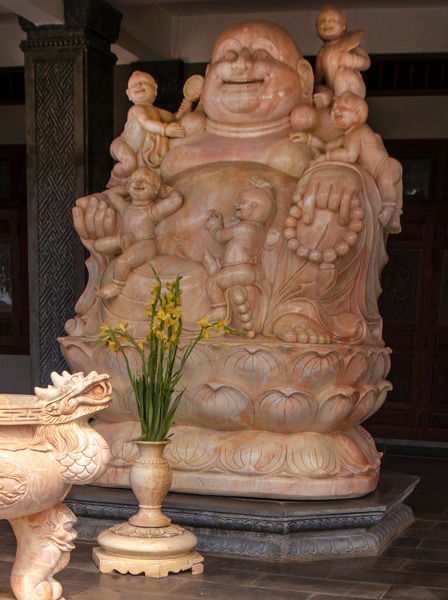
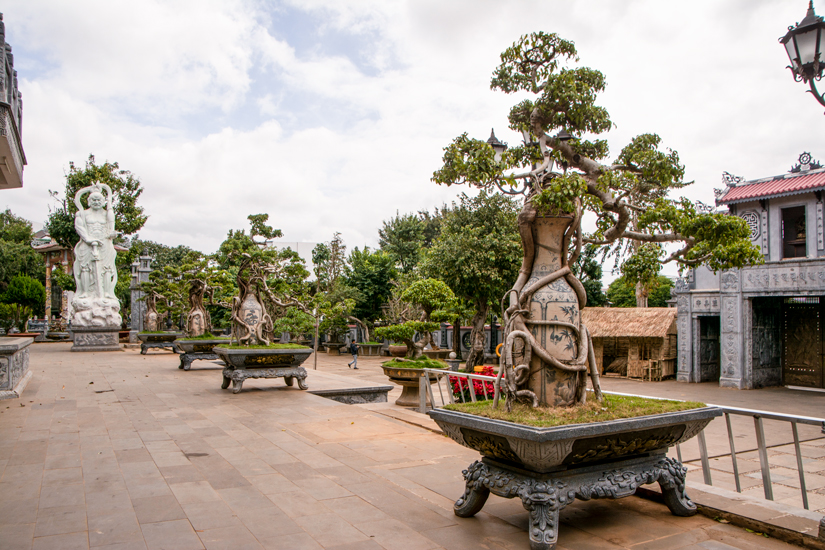
I
haven't seen this art form outside of China.
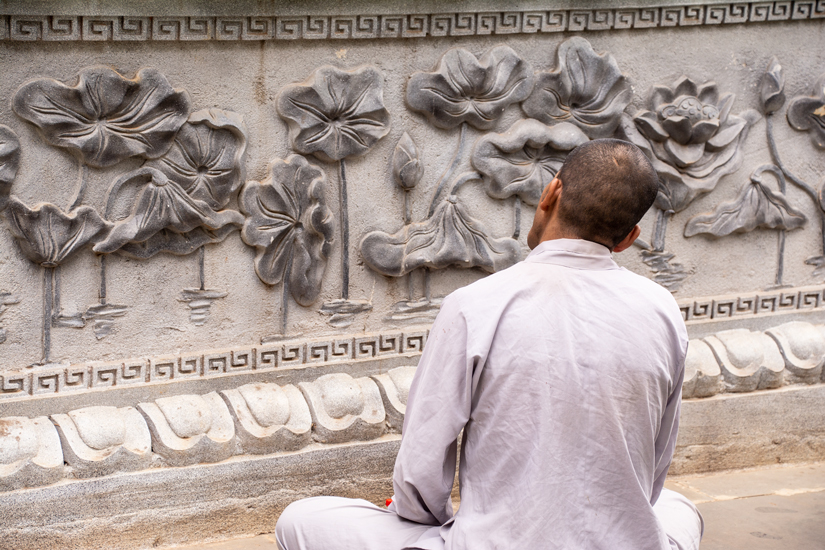
I
checked on my way out. Still there, still looking.
Return
to Buon Me Thuot